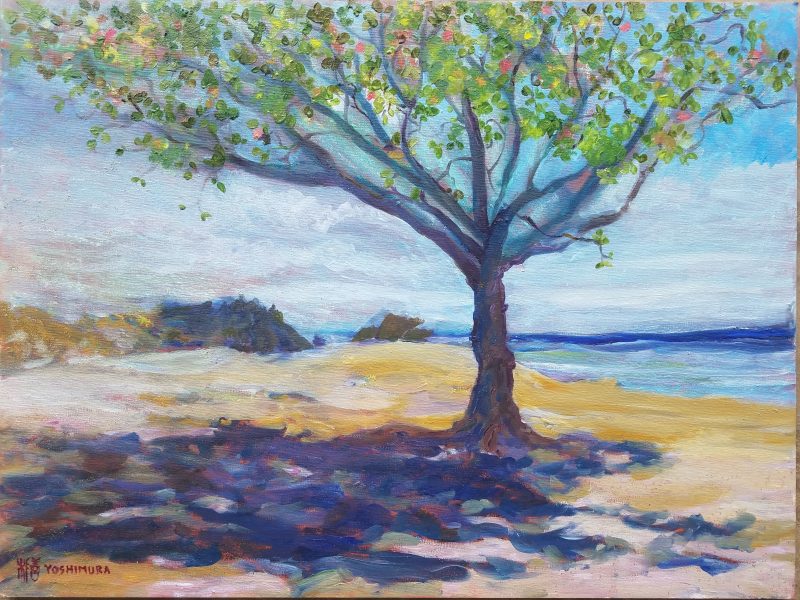
18x24in. Oil on panel. $1200
Kumu Glen Kila shared the story about how the kupuna of Makua tried to reason with the US military during WWII when they wanted to use the beach as a landing area for military transport and supplies. This was their ancestral burial ground but the military said all they saw was a bunch of sand and bushes. The kupuna were wise enough to realise they needed to make the invisible visible, so they gathered the community and build a stone platform. The military then asked, “Where are the other corners?” The kupuna pointed to the pohaku of the mo’o who guards the stream inlet, ‘There is one.” Ok, but where is the other? Pointing to the kamani tree on the beach, “There is one.”
Now, whenever I see this tree that stands on the beach, I ‘see’ the protective boundary the kupuna created. I can see that most of the beachgoers are oblivious to the markers or burial grounds behind the haole koa, just as other strangers 80 years ago were, because they do not know the stories. A proverb advises us not to move ancient boundary markers, and now I know why. It is comforting to see the kamani tree standing as a sentinel and hero of this mo’olelo that helped save a family’s bones and let them continue to rest in peace.
To learn more about my partnership with the hub take the 360 degree virtual tour.